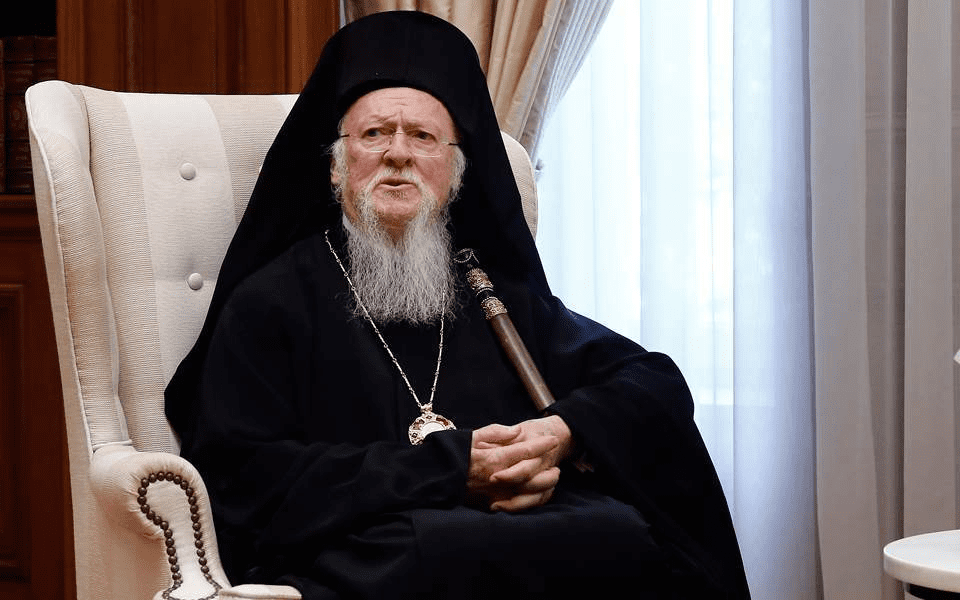By Allan Shen, Dailyprincetonian.com
Leaders of the Eastern Orthodox Church have filed a federal lawsuit against the University over four historic religious manuscripts that date to the Byzantine era.
The plaintiffs of the lawsuit include His All Holiness Bartholomew I, Ecumenical Patriarch of Constantinople; the Holy Metropolis of Drama; and the monastery of Theotokos Eikosiphoinissa.
The plaintiffs state that the manuscripts are under unlawful possession by the University.
After the University refused to agree to their demands to have the manuscripts returned, they filed the lawsuit as an action to recover the manuscripts.
Three of the manuscripts include St. John Chrysostom’s “Commentary on the Gospel of Matthew,” written in 955 A.D. by Nikephoros the Notary; St. John Climacus’s “Heavenly Ladder,” written in 1081 A.D. in Constantinople by the scribe Joseph; and ninth-century pages that are likely out of “Commentary on the Gospel of Matthew” that may have been rebound to “Heavenly Ladder.”
The manuscripts were purchased by University alumnus and trustee Robert Garrett, Class of 1897, in 1924 and then donated to the University as a gift in 1942.
The fourth manuscript, a 16th-century version of “Commentary on the Gospel of Matthew,” was purchased by the University in 1921.
According to a New York Times article, all four manuscripts in question originate from an auction house based in Frankfurt named Joseph Baer & Co.
It is unclear whether the University directly purchased the fourth manuscript from that auction house or if it went through more exchanges between the auction house and the University.
The lawsuit said that the Theotokos Eikosiphoinissa Monastery, located in northern Greece, was attacked by a group of Bulgarian guerilla forces near the end of the First World War in March of 1917. The forces assaulted the monks and stole the most valuable manuscripts, including the four manuscripts that are at the center of the lawsuit.
According to the lawsuit, Princeton University Press published “Greek Manuscripts at Princeton, Sixth to Nineteenth Century: A Descriptive Catalogue” — which identifies that some items in the University’s collection were removed from the monastery by Bulgarian authorities — in 2010.
“This is Princeton’s book, issued by the Princeton press, about Princeton’s collection, written by Princeton employees,” said George A. Tsougarakis, legal counsel for the Patriarchate and a lawyer with Hughes Hubbard & Reed in New York, which is representing the plaintiffs.
“In our view, that’s about as concrete an admission as you could get,” he said.
Deputy University Spokesperson Michael Hotchkiss disputes the allegations. Hotchkiss said that the issue was brought to the University’s attention in late 2015.
“We have found no basis to conclude that the manuscripts in our possession were looted during World War I or otherwise improperly removed from the possession of the Patriarchate,” Hotchkiss said.
During a phone interview with The Daily Princetonian, Tsougarakis expressed his optimism about the chances of his clients winning the lawsuit against the University.
“We stand on very solid legal grounds to request the return [of the manuscripts],” Tsougarakis said. “It is almost uniformly the trend [for] institutions like Princeton and art museums and the like to return the items that have been stolen. And the most notable trend that we have seen recently is with the Nazi-looted artwork.”
Tsougarakis highlighted that, historically, much of the stolen artwork has been voluntarily returned to the rightful owners. In cases where they were not voluntarily returned, lawsuits have been filed, and the heirs of the owners have invariably returned the artworks.
For instance, officials of the Eastern Orthodox Church stated that the Lutheran School of Theology at Chicago has voluntarily returned a 337-page edition of New Testament written in the ninth century by a monk named Sabas.
The edition was also allegedly stolen from the monastery in 1917.
The plaintiffs are also pursuing other documents that are under the possession of Duke University and the Morgan Library & Museum in New York City for the concern that those documents were also looted by the Bulgarian guerillas.
Tsougarakis expressed that the plaintiffs are also on strong legal grounds to seek the return of manuscripts under possession by Duke University and the Morgan Library.
Classics associate professor Emmanuel Bourbouhakis, who specializes in the study of medieval Greek and Byzantine manuscripts, suggested that the rationale behind the plaintiffs’ lawsuit may be insufficient.
“The representatives of the monastery are claiming that the manuscripts in question must have been among those looted by the war party, yet the manuscripts given by Garrett were not in the inventory of the looted manuscripts held by the Bulgarian authorities,” Bourbouhakis said.
Bourbouhakis also indicated that the manuscripts could have been sold off as well, rather than stolen.
“There is at least as much evidence that this and other monasteries under Patriarchal jurisdiction, which had fallen on hard times, had sold off valuable manuscripts before the Balkan Wars in order to [financially] sustain themselves,” Bourbouhakis said.
As such, Bourbouhakis expressed that the University should demand “far more solid evidence” before giving up ownership of the manuscripts.
Nadya Fishchenko ’22, a student of Eastern Orthodox faith, expressed her recognition of the reasons for both parties to possess the manuscripts.
“In Eastern Orthodox [theology], the Sacred Tradition is treated as an essential part of faith. That is why, to church, those manuscripts are not just unique because of their age. Still, I personally believe that those manuscripts will be more useful to [scholars than] to the church, but I think that it shouldn’t be forgotten that it is a part of church’s heritage,” Fishchenko said.









